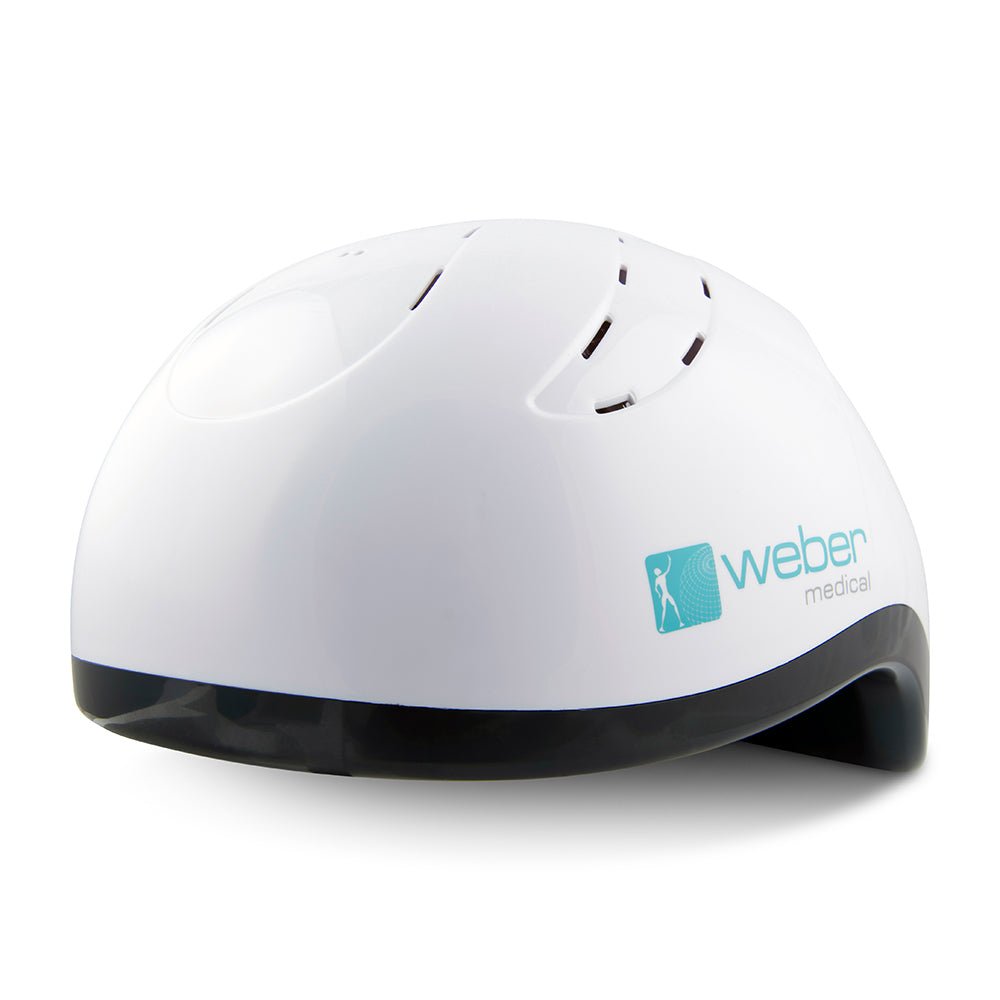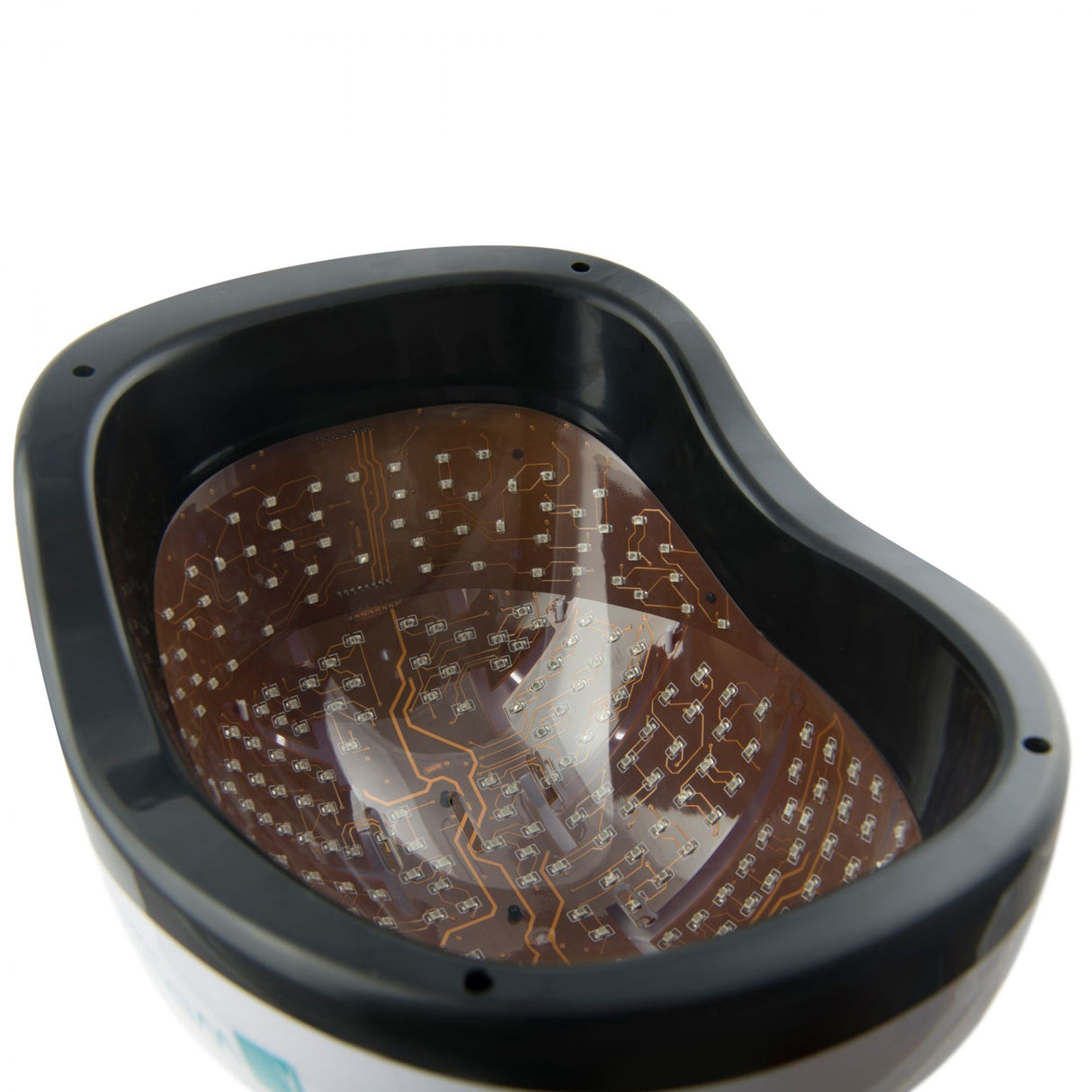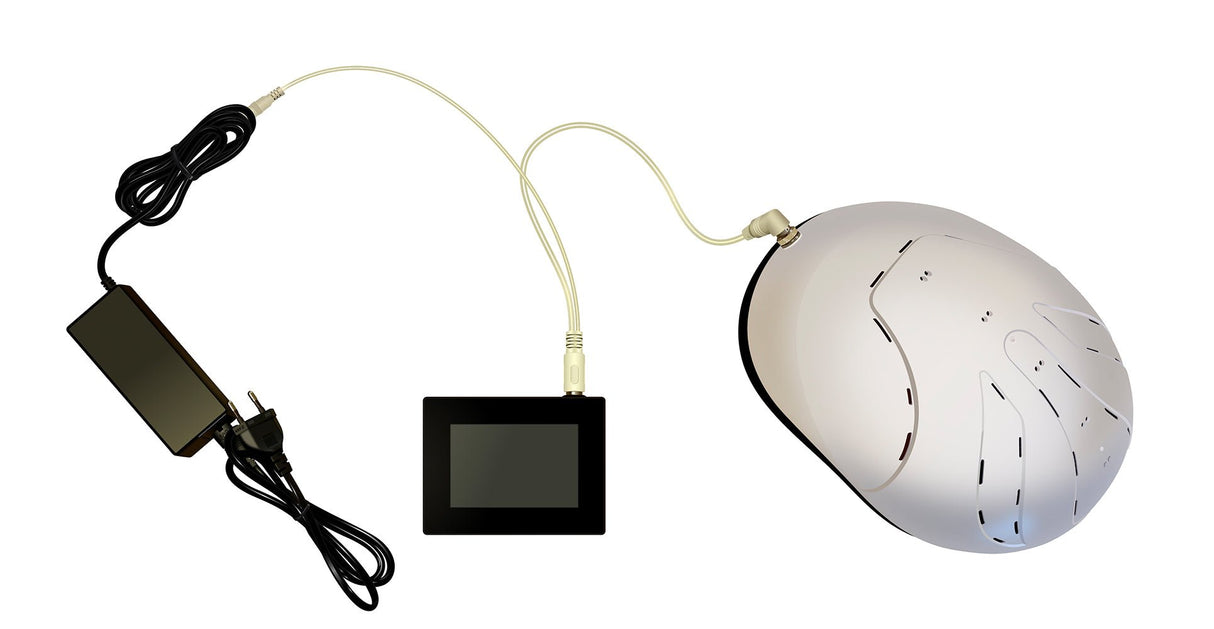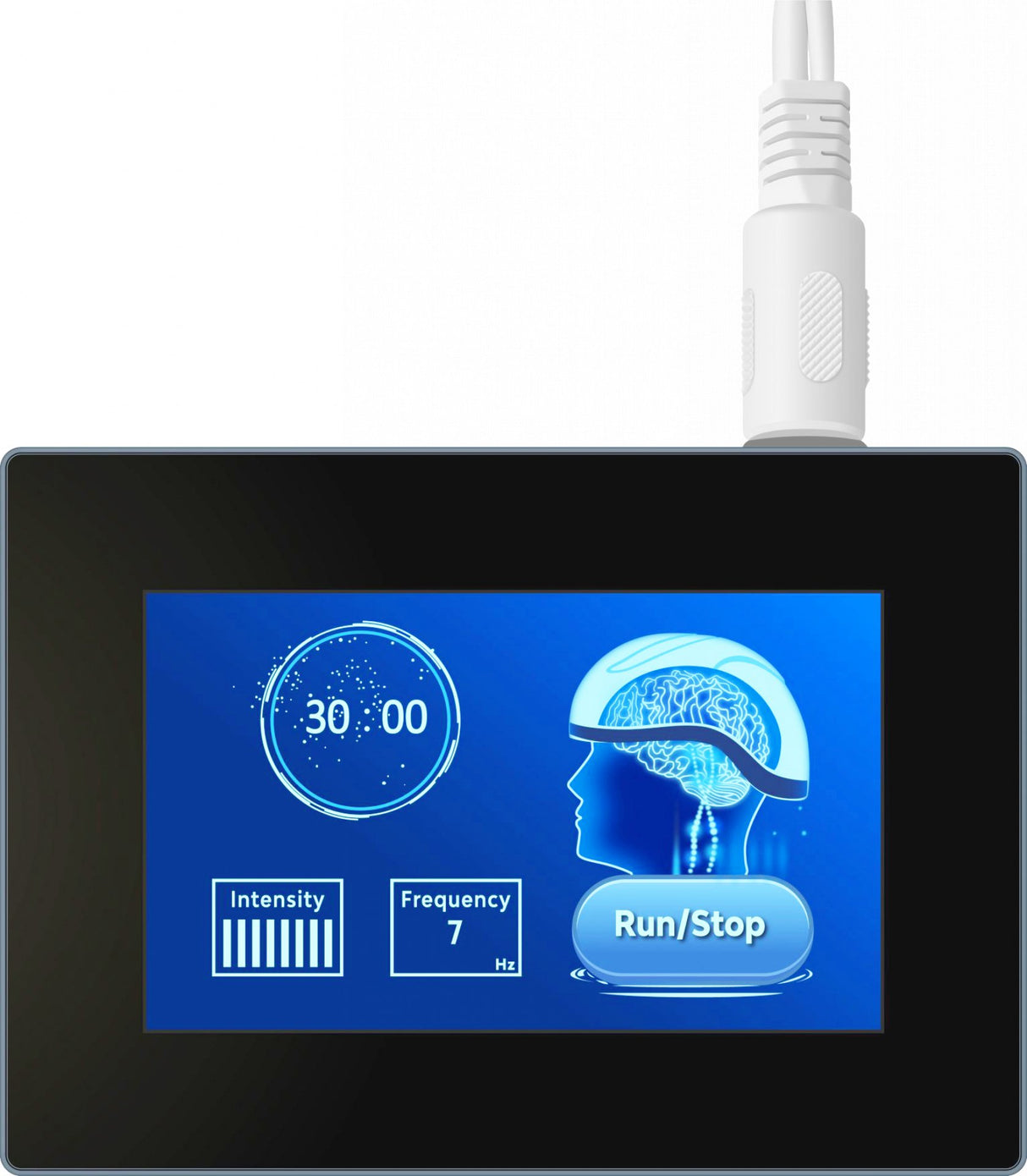Weber Medical Infrared Helmet
Weber Medical Infrared Helmet - White Black is backordered and will ship as soon as it is back in stock.
Attachment
Weber Medical Infrared Helmet
Photobiomodulation at home - strengthen your brain in a simple and comfortable way
Recharge your brain with advanced technology
Our brain is the most complex organ in the body, responsible for the control of everything from our most basic functions such as breathing and heartbeat, to more complex activities such as thought processes, decision -making and emotions. Even when we sleep, the brain does not rest - it works continuously to process today's experiences, store memories and facilitate the next day. With Weber Medical Infrared Helmet, you can give the brain the support it needs to function optimally. This groundbreaking product is the result of several months of intense research, development and testing, and it is now available to anyone who wants to improve their mental health and cognitive function.
How does photobiomodulation help your brain?
Photobiomodulation (PBM) is a non-invasive treatment that uses light energy to stimulate the cells in the body, especially the mitochondria, which are responsible for producing cellular energy. In the brain, PBM can help improve blood flow, increase oxygen saturation and promote repair and growth of neurons. This in turn can improve cognitive functions such as memory, attention and decision -making. Research has shown that PBM can be beneficial for a variety of neurological conditions, including traumatic brain damage, stroke, Alzheimer's disease and Parkinson's disease.
The benefits of using 810 nm light
810 Nm infrared light is especially effective for penetrating the skull and reaching deep into the brain tissue without causing damage. This wavelength has been extensively studied and proves to have a number of benefits:
-
Deep tissue penetration: 810 Nm light can reach deeper into the body tissue compared to other wavelengths. This makes it especially suitable for the treatment of deep -lying structures such as the brain.
-
Increased ATP production: When 810 Nm of light is absorbed by the mitochondria, the production of ATP increases, which is the primary source of energy for the cells. This helps to improve the function of the cells and promote healing processes.
-
Anti-inflammatory effects: 810 Nm light has been shown to reduce inflammation, which is important in the treatment of neurological conditions such as Alzheimer's disease, where inflammation plays a central role.
-
Improved blood flow: Studies have shown that 810 Nm of light can increase the microcirculation in the brain, leading to better oxygen supply and removal of waste.
-
Neurobic Protection: This specific wavelength has also been shown to protect neurons from damage and promote neuroplasticity, which is the brain's ability to form new compounds.
320 powerful infrared diodes for targeted treatment
Weber Medical Infrared Helmet is equipped with a full 320 infrared diodes, each with a wavelength of 810 Nm. This specific wavelength is chosen because it has proven to be especially effective in penetrating the skull and now the brain tissue without causing damage. The light stimulates the mitochondria of the brain cells, leading to increased energy production and better cellular function. This can help improve neuroplasticity - the brain's ability to adapt, change and form new compounds - which is crucial to learning and memory.
Benefits of Weber Medical Infrared Helmet
-
Improvement of memory and learning: By increasing the levels of neurotrophic factors such as BDNF (Brain-Derived Neurotrophic Factor), the helmet can contribute to better memory and faster learning. This is especially important after injuries such as traumatic brain damage.
-
Support for recovery by stroke: After a stroke, the brain may have difficulty restoring its functions. PBM can help reduce the damage by stimulating new cell growth and improving blood circulation in the affected area.
-
Reduction of neuroin flammation: Neurological diseases such as Alzheimer's disease are often associated with inflammation of the brain. PBM can help reduce this inflammation, which can slow down disease progression.
-
Relieving symptoms of Parkinson's disease: Parkinson's disease is characterized by loss of dopamine -producing neurons in the brain. PBM can help protect these neurons and reduce the motor symptoms that characterize the disease.
-
Treatment of depression and anxiety: By modulating the levels of important neurotransmitters such as serotonin and endorphins, PBM can help relieve symptoms of depression and anxiety.
-
Help against chronic fatigue and brain fog: Many people who have had Covid-19 are struggling with long-term symptoms such as fatigue and brain fog. PBM can help reduce these symptoms by reducing oxidative stress and improving energy production in the cells.
-
Treatment of tinnitus: Tinnitus, or earrings, can be a very troublesome condition. PBM can, especially when combined with red light in the ears and specific supplements, can help reduce the symptoms.
What is transcranial photobiomodulation?
Transcranial Photobiomodulation (TPBM) is a special form of PBM that targets the brain. This means that light photons are delivered directly through the skull to affect the brain cells. The mechanisms behind TPBM include absorption of light in the mitochondria, leading to increased production of ATP, the most important energy source for the cells. This gives the cells more energy to perform their functions effectively, including repair and maintenance of the cells themselves. TPBM has also been shown to modulate various signaling pathways in the brain, which can lead to increased expression of genes that protect the cells from injury and disease.
Overview of research and health effects using various frequencies and light modulation
Light modulation:
Light modulation refers to how the light energy is pulsed or released in continuous waveform (CW). Research has shown that both vibrant and continuous light have benefits, but the application may vary depending on the desired effect.
-
Constant light (CW): Constant light is usually used when the goal is to deliver a stable and sustained current of light energy to an area. This can be particularly useful in the treatment of chronic conditions where one wants a smooth stimulation of the tissue over time, as in the treatment of neurodegenerative diseases such as Alzheimer's or Parkinson's.
-
Pulsating light: Pulsating light can provide a stronger biological response by mimicking the body's natural rhythms. Research has shown that pulsation at certain frequencies can stimulate different biological processes more efficiently than constant light. For example, pulsating light at lower frequencies (1-20 Hz) may be useful for promoting relaxation and recovery, while higher frequencies (20-200 Hz) may be more effective in stimulating neural activity and promoting cognitive function.
Frequency overview and health effects:
-
1-20 Hz: Low frequency pulsation is often used to promote deep relaxation, pain relief, and recovery after injury. This frequency can also be beneficial for supporting sleep and reducing anxiety.
-
20-200 Hz: Moderate frequency pulsation is often used to stimulate mental clarity, improve focus, and promote general cognitive function. This frequency range can also be useful in rehabilitation after stroke by stimulating neuroplasticity.
-
200-1000 Hz: Higher frequencies are often associated with faster cellular activity and can be useful in situations where one wants to accelerate the healing process, as in the treatment of acute damage or inflammatory conditions.
-
1000-20,000 Hz: Very high -frequency pulsation can affect deep tissue processes and used in advanced photobiomodulation to target specific cellular mechanisms, including regulation of gene expression and modulation of complex neuronal networks.
The benefits of 810 nm light combined with frequency modulation:
When 810 Nm light is combined with the correct frequency modulation, it can provide specific benefits such as improved neurobic protection, faster recovery of cognitive functions, and better handling of neurological conditions. For example, low -frequency pulsation with 810 Nm of light can improve sleep and reduce neuroin flammation, while higher frequencies can be used to stimulate cognitive performance and focus.
Technical specifications
Weber Medical Infrared Helmet is designed to be user -friendly and efficient. Here are the technical specifications:
- Number of diodes: 320 powerful LEDs
- Wavelength: 810 nm
- Exit effect: 50 mw per diode, total 16 w
- Intensity levels: Adjustable in four levels - 25 %, 50 %, 75 %and 100 %
- Frequency: Adjustable from 1 to 20,000 Hz
- Duration: Adjustable from 0 to 30 minutes, recommended use is 20-30 minutes per day
- Input power: 5V DC, compatible with standard USB charging
This combination of technology and ease of use makes Weber Medical Infrared Helmet an ideal tool for anyone who wants to preserve their mental health.
Security and clinical evidence
Several studies have documented the safety and effect of TPBM for a number of neurological conditions. TPBM has proven to be a safe treatment method without known serious side effects. In clinical studies, patients with conditions such as Alzheimer's disease, Parkinson's disease, stroke and traumatic brain damage have experienced significant improvements in both cognitive and motor functions after treatment with TPBM.
A review of studies published over the last 20 years shows that TPBM can be particularly effective as a supportive treatment for brain disorders, especially when traditional pharmacological treatment is limited due to the blood-brain barrier, which prevents many drugs from reaching the brain.
Reservations: This helmet is not intended to replace medical treatment, but can be a useful addition to other forms of treatment. It is not intended to diagnose, treat, cure or prevent any illness. Results can vary from person to person, and we recommend consulting a doctor before use, especially for people with existing health problems.
Manual
The use of Weber Medical Infrared Helmet is simple and adapted to daily use. Before using the helmet, it is recommended to read the operating instructions carefully to ensure optimum power and safety. The helmet is placed on the head, and via the touch screen you can easily adjust the duration, frequency and intensity according to your personal needs. The recommended use is 20-30 minutes per day, but it can be useful to start with shorter sessions to adapt to the treatment.
The future of neurora rehabilitation
Neurorative rehabilitation has traditionally been challenging, especially for patients with severe brain diseases or injuries. TPBM represents a promising new approach to the treatment of such conditions, which is not only non-invasive, but can also be performed in the home without the need for continuous supervision from health professionals. With Weber Medical Infrared Helmet, you get access to advanced medical technology that can support brain health and improve the quality of life.
Important Warning: This text does not claim that Weber Medical Infrared Helmet can cure some illness. All allegations of effect are based on existing scientific research and clinical studies, but individual results may vary. Always consult with a qualified health care professional before starting a new treatment protocol.
























